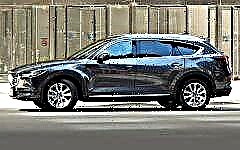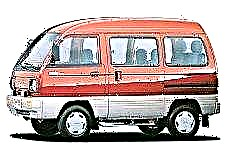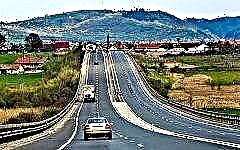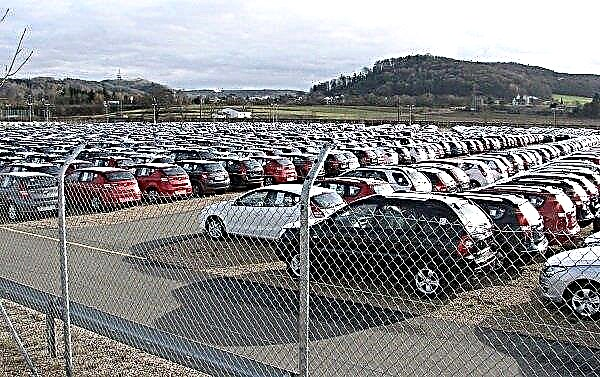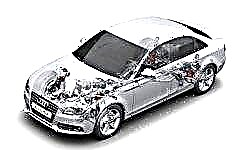

The content of the article:
- What is dynamic control
- Device
- Scheme
- Principle of operation
- Pros and cons
The dynamic steering system of a car, like any other type of control mechanism, is designed to transfer the ratio of steering wheel turn to wheel turn. The main difference is the ability to change the gear ratio of the steering system, depending on the steering angle and vehicle speed. Let's consider in more detail how the dynamic steering mechanism works, the scheme and principle of operation, as well as how much the repair will cost on average.
What is dynamic steering

If everything is clear with conventional steering, then what is the difference between the dynamic steering mechanism. The main difference is the ability to change the steering gear ratio, which depends on the steering angle or the speed of the vehicle as a whole. As a rule, the system works in tandem with the directional stability mechanism, as well as the dynamic stabilization of the vehicle. Due to the collected data, the system automatically steers the front wheels, thereby stabilizing the trajectory of the car.
For the first time they started talking about the dynamic steering system in 1998, then Toyota began to install it on its cars, labeling the mechanism as VGRS (Variable Gear Ratio Steering)... Today, dynamic steering is most often found on Audi cars, although it is also found on Volvo, Mercedes and other premium cars. The basis of the entire system is the summing mechanism, which can change the angle of rotation of the front wheels.
Dynamic steering device

As already mentioned, the main and key elements of the dynamic steering system are the summing mechanism, which can change the angle of rotation of the steering wheels of the car. Depending on the conditions, the steering angle can increase or decrease, both with the participation of the driver and without his participation.
The very same summing mechanism for dynamic steering is located on the steering shaft. As a rule, the upper part is connected to a flexible gear by means of a splined connection. Such a gear is made in an oval shape, therefore, it is often connected to a toothed clutch only in two places. It is very simple to distinguish it from others, such a clutch has 2 more teeth, which helps the mechanism to function. The gear clutch itself is rigidly connected to the steering shaft (its lower part).
It should be understood that unlike many car safety and comfort systems, the dynamic steering system can work constantly or, if necessary, it can be turned off. Depending on the manufacturer, the mechanism and device of dynamic steering may vary, therefore, the main parts and device were considered above. Now we will consider the scheme of the summing element and the principle of the system, as well as the main nuances.
Diagram of the main summing mechanism

The photo shows the summing mechanism
- mechanism shaft;
- main stator of the electric motor;
- steering shaft;
- rotor part of the electric motor (rigidly attached to the shaft);
- oval bearing;
- gear;
- gear clutch.
Depending on the manufacturer, the shape and arrangement of parts may vary, but the basic shape and set of elements will be the same for most car models.
How dynamic steering works

Despite the possible different structure of the dynamic steering mechanism, the principle of operation for most options will be the same. Let's consider two variants of the mechanism operation when the system is inactive and activated. The first moment, when the system is turned off, in this case, the rotation of the steering wheel is transmitted through the upper part of the steering shaft, then to the flexible gear and the toothed clutch, after which the force is transmitted to the lower part of the steering shaft and to the steering mechanism itself. In this case, the gear ratio does not change. , as the system is deactivated and cannot help the driver. As a rule, the vehicle's dynamic stabilization system is also disabled or operates at minimum capabilities. Often, the system is turned off on poor road surface or low speed, where wheel steering will only interfere with steering.

In the case when the dynamic steering mechanism is active, the principle of operation will be different. A current is supplied to the electric motor, due to which the rotation of the electric motor is transmitted to a special, oval bearing, then to a flexible gear, and finally to a toothed clutch. Due to this structure, a full rotation of the bearing shifts the pinion shaft 3.5 degrees relative to the center of the axis. As a result, a negative or positive summing moment is achieved. For the driver, this means that the steering wheel will need to be turned more or less often to turn the wheels.
The very same control of the electric motor of the summing mechanism is performed by the electronic control unit. Depending on the driving style, road surface and driving conditions (the control unit receives all this from special sensors or other security systems), the control unit calculates the required steering angle, as well as the number of gear moments. If we talk about the vehicle's dynamic stabilization system, then dynamic steering is also triggered here. In this case, the control unit calculates the steering moment of the steering wheels in automatic mode, as well as the required steering angle.

Often, to calculate such parameters and automatic operation, the system takes as a basis the vehicle speed (determined by the wheel rotation sensor) and the steering angle set by the driver. It is also possible that the electronic control unit will use information from other security systems, for example, directional stability sensors, as well as collision avoidance systems.
Advantages and Disadvantages of Dynamic Control

Like any mechanism, dynamic steering has advantages and disadvantages. With the advantage, we can note the assistance to the driver in stabilizing the car at high speed and improving handling. This is a minimal list of what you should most often expect from a given mechanism.
There are much fewer negative points, but as practice and life situations show, at some moments the dynamic steering system only worsens handling, especially when unpredictably you need to turn the steering wheel abruptly and avoid a collision, or when you need to turn the steering wheel often because of a bad road.
Whatever it was, if the choice is to install a dynamic steering system or not, the unequivocal answer is yes, it is necessary. This is additional protection, and if necessary, it can be disabled at any time.


